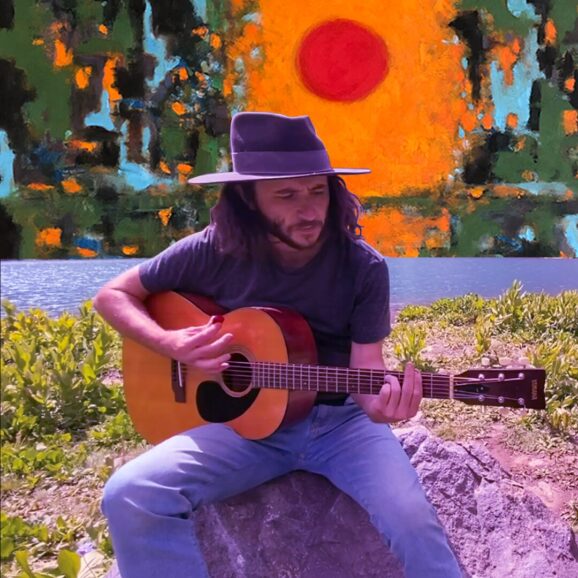Art Blakey & The Jazz Messengers were seminally vital in the development of Blue Note Records. Blakey, beginning in 1947 and continuing for over the next two decades, made more than 20 albums for the label as a leader and appeared on over 40 as a sideman. (Keep in mind Blakey has many more as this only includes Blue Note) Last October 19th marked the centennial of his birth and Blue Note began several projects of re-issues and new vinyl pressings to commemorate Blakey. So, given the breadth of material in their vaults, this never-before-released recording, Just Coolin,’ may not have as interesting a back story as some that we’ve enjoyed over the past few years but it joins unreleased recordings (Coltrane, Monk, Mingus, Getz, etc.) that have arguably been the biggest news in the genre. (Hint: more unreleased albums of icons are coming). Blakey’s has a story too.
We know about the shifting personnel in Blakey’s fabled ensemble. At one of its many fertile periods, the late 50s and early 60s, the soul-jazz period that most deem the most classic, lineups are those that included trumpeter Lee Morgan – quintets where Morgan was paired on the front line with Benny Golson (1958) and Wayne Shorter (1959-61). Just Coolin’ represents an interlude between those two units as Hank Mobley filled the saxophone chair vacated by Golson. Golson had recruited Philadelphians Morgan, pianist Bobby Timmons and bassist, the recently passed Jymie Merritt, and was the band’s musical director for two of the band’s most popular tunes, “Moanin’” and “Blues March.” Golson only stayed for less than year. Enter Mobley who was also a noted composer, had played with Morgan, Timmons, and Blakey; and heretofore composed three of the six for this studio recording from March,1959.
Yet, these sessions remained unissued until now because they were superseded by two albums of performances recorded at Birdland a month later and released as Art Blakey and the Jazz Messengers at the Jazz Corner of the World. Blue Note and others like Impulse! had great success during those periods with multi-volume location recordings. In any event, the Birdland tracks included four of the six tracks here and the studio album was hence relegated to the vaults.
But, any time we get to hear fresh music from Morgan, Mobley, and Timmons in their prime is indeed special. These tracks boast furious tempos and the combustible energy that defined the classic Jazz Messenger units. These cats are on fire! They begin with Mobley’s “Hipsippy Blues,” a shuffle groove that defined Blakey’s drumming style, with Mobley and Timmons soloing aggressively. Morgan begins his rather pensively, building it steadily. If you’re familiar with Timmons from “Moanin’” you’ll clearly hear those same soulful touches from him here.
“Close Your Eyes” became a fixture in Blakey’s live sets and was included in this group’s performance at the 1959 Newport Jazz Festival. Its opening, memorable riff evokes parts of Miles’ “So What” and Gershwin’s “Summertime” but this is hard bop, not a modal tune, with Morgan igniting the proceedings early followed by Mobley’s expressive statement. Timmons displays some Bud Powell runs during which Blakey switches to brushes. Merritt walks the bass in strutting style as the theme rejoins. “Jimerick,” of unknown origin, has the fastest tempo of the six with Timmons opening in blazing fashion which Morgan completely takes to even higher levels with his explosive solo. Timmons then plays a lightning-fast blues solo that Mobley follows with both blistering phrases a few declarative exclamations, leading to Blakey’s most extensive solo on the disc, one that starts slowly but builds in ridiculous intensity before restating the theme.
Side two begins with Timmons’ “Quick Trick,” appearing here as the only known version of the tune. Timmons starts with a standard eight-bar line, moves to a 16 bar chorus but adds some challenging horn parts that the front line masters. Notably, Timmons receives support midway by a shout chorus from the horns before each takes flight on their typical soaring solos. Blakey gets another chance to explode, briefly this time as the theme reprises. Mobley’s “M&M,” named for the two front liners, is taken at a slightly slower pace than the Birdland version and is structured slightly differently but each of the three soloists find room for individuality. The title track comes originally from Mobley’s 1955 Blue Note debut that had Blakey on drums. This version is as close to a medium tempo as this band played at the time but like the others, it gets heated quickly. Mobley makes a strong entrance, Morgan delivers perhaps his best performance on the disc, and both Merritt and Blakey make their own bold statements. While it’s difficult to believe this was overshadowed by the live Birdland performances, it remains emblematic of that special energy that set Blakely’s Jazz Messengers apart.
And, the story has an ending of sorts too. When Mobley failed to appear for the group’s performance at a Canadian jazz festival, Morgan reached out to Wayne Shorter, who soon became the musical director and set a more visionary course for the band. Blakey and Mobley remained on good terms, but the tenor chair was Shorter’s for nearly the next three years.









